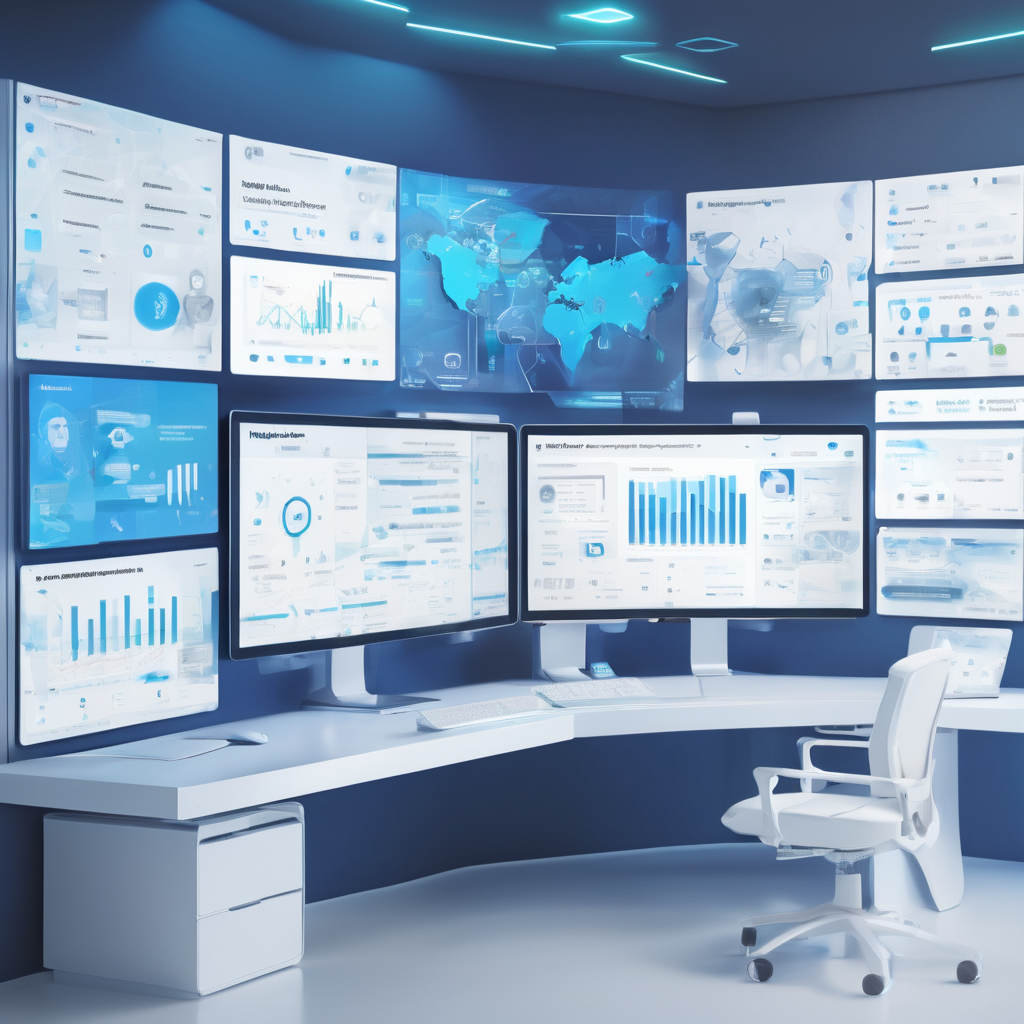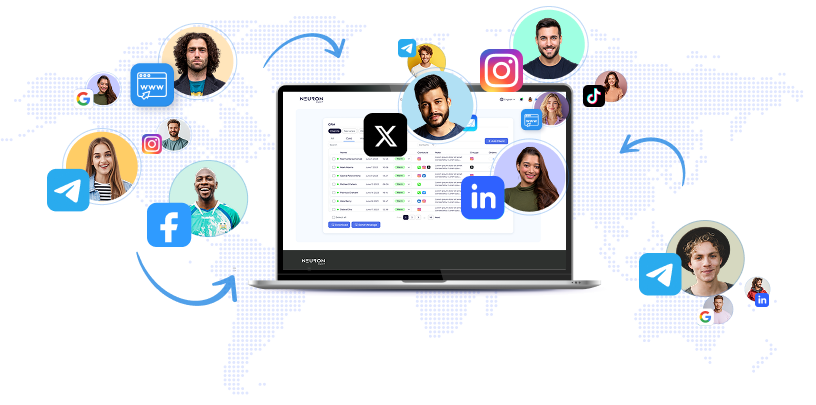
In part 1 of this series, we examined how agentic AI is revolutionizing the top of the B2B sales funnel—from intelligent lead generation to personalized autonomous outreach. Part 2 explores how this transformation is fundamentally reshaping sales team structures, boosting efficiency, and driving scalable success through intelligent autonomy and disciplined MLOps. **Condensing the Funnel: Rearchitecting Sales Roles and Workflows** Agentic AI compresses and redefines the sales funnel, breaking down traditional silos between marketing and sales. Previously, marketing generated leads (MQLs), sales development reps (SDRs) qualified them (SQLs), and only then did sales executives engage. Now, AI agents instantly qualify and follow up on leads, converting them seamlessly into pipeline opportunities. Rather than marketing handing off thousands of MQLs to SDRs, AI SDR agents nurture every lead from the outset, escalating only truly sales-ready prospects to humans. This renders legacy metrics like MQLs less relevant—qualified pipeline and revenue become the true benchmarks, directly influenced by AI. The automation of repetitive, low-value tasks also reshapes human roles within go-to-market (GTM) teams. Entry-level roles, especially SDRs, traditionally tasked with cold calls and data entry, are now evolving. New sales professionals spend less time on outreach grunt work and more time managing AI agents or engaging in high-value customer interactions. This shift raises the skill and strategic demands at the entry level, transitioning the SDR function from manual labor to AI orchestration. Simultaneously, account executives and sales managers gain freedom from administrative burdens like scheduling, data entry, pipeline updates, and proposal drafting, which AI increasingly handles. This enables them to focus on complex deal strategies and relationship building. McKinsey predicts that generative AI (GenAI) can manage nearly the entire sales journey—from prospecting through negotiation—with minimal human intervention, reserving human effort for complex, solution-based deals. The overall result is a leaner, faster, and more empowered revenue organization where team members operate at peak skill. As Harvard Business Review advises, AI should improve engagement quality, not just quantity, fostering meaningful human touchpoints supported by continuous AI-driven interactions keeping prospects informed and engaged. Moreover, AI blurs traditional boundaries between sales and marketing, fostering tighter collaboration around configuring AI agents and analyzing their rich data outputs. This shift demands new management approaches focused on augmenting human skills—trust-building, nuanced customer understanding, and innovation—rather than replacement. By offloading repetitive and analytical duties, AI enables revenue professionals to act more as consultative closers and strategists, boosting effectiveness in addressing real customer problems. This exemplifies how agentic AI positively transforms B2B sales. **Scaling Up: Deeper Intelligence, Intent Recognition, and MLOps** After initial gains, organizations are deepening AI capabilities with advanced algorithms tailored to specific GTM needs, enhanced intent recognition, and robust MLOps practices to sustain and scale success. Moving beyond generic GenAI tools towards purpose-built solutions, AI now integrates internal and external customer data to deliver real-time guidance—such as recommending upsells, predicting objections from procurement histories, and providing negotiation tactics. Intent recognition advances enable agents to identify complex buying signals—like spikes in website activity combined with funding announcements—to act immediately on high-probability opportunities. AI-driven systems reduce human guesswork by connecting data dots and continuously refining intent models, which is critical for competitive advantage. Supporting this sophistication requires strong MLOps: establishing data pipelines that provide fresh, clean data; monitoring AI performance to detect drift; and retraining models as needed. For example, if an AI sales agent’s email response rates decline, MLOps teams diagnose causes, adjusting models or addressing external changes. Human oversight ensures AI remains aligned with business objectives and brand standards. Context-awareness is crucial; AI must avoid errors like pitching existing clients inappropriately. Effective MLOps unify data silos, ensuring AI leverages up-to-date CRM records and content libraries. As emphasized by experts, quality data underpins trustworthy AI—without it, AI agents produce mere noise. Best practices include governance, data quality maintenance, and robust data warehousing to build user trust. For successful scaling, AI must integrate seamlessly into daily workflows. Merely deploying AI tools is insufficient if teams don’t adopt them. Embedding AI outputs in familiar platforms—Salesforce insights, Slack alerts, AI-generated email drafts within sales tools—enhances adoption by minimizing tool-switching.
AI should function as an invisible assistant woven into everyday activities—sending calendar invites, auto-logging call summaries—making it feel like a natural extension of the team. Looking ahead, AI agents are expected to “close the loop” by executing transactions for simpler products and managing renewals or upsells based on usage and customer health trends. The future of AI in B2B sales will be characterized by personalized recommendations and predictive actions that eliminate guesswork, with AI evolving from supportive assistants into indispensable teammates managing significant parts of the revenue engine under human strategic guidance. As a CRO, I embrace this future—balanced with thoughtful management—because it promises a data-driven, proactive business that delights customers through timely, personalized outreach at scale. --- **About the Author:** Bill Tennant is Chief Revenue Officer at BlueCloud, leading strategic growth, partnerships, and enterprise technology adoption. With nearly 20 years in finance, sales, and customer success, he is recognized for driving measurable outcomes through generative AI and advanced analytics. His vision emphasizes co-created value, responsible governance, and scalable AI-powered solutions. --- **Sources:** - Sinha, P. , Shastri, A. , & Lorimer, S. (2023). How Generative AI Will Change Sales. Harvard Business Review. - Gross, I. & McLeod, L. (2025). How Sales Teams Can Use Gen AI to Discover What Clients Need. Harvard Business Review. - Chung, D. J. , et al. (2025). 5 Gen AI Myths Holding Sales and Marketing Teams Back. Harvard Business Review. - Qualified (2023). AI Agents and the Rise of Agentic Marketing in B2B. - Qualified (2025). The Agentic Marketing Funnel. - McKinsey & Co. (2024). An Unconstrained Future: How Generative AI Could Reshape B2B Sales. - McKinsey & Co. (2023). The economic potential of generative AI: The next productivity frontier. - DemandScience (2023). Harnessing the Power of Generative AI in B2B Sales. - Deloitte Insights (2024). Tech Companies Lead the Way on Generative AI. - SonarSource (2023). AI Code Generation: Benefits and Risks.
How Agentic AI is Transforming B2B Sales Teams and Scaling Success with MLOps


In today’s fast-paced world, the enormous amount of news content produced daily is truly staggering.

Jensen Huang, CEO of semiconductor giant Nvidia—whose value has surged 300% over two years—personifies the AI mania.

Yahoo is advancing its integration of artificial intelligence into advertising technology, as detailed by Adweek.

Key Points BigBear

Artificial intelligence (AI) is swiftly transforming the digital marketing arena, significantly influencing search engine optimization (SEO).

Vista Social has made a major breakthrough in social media management by integrating ChatGPT technology into its platform, becoming the first tool to feature OpenAI's advanced conversational AI.

Dive Brief: U
Launch your AI-powered team to automate Marketing, Sales & Growth

and get clients on autopilot — from social media and search engines. No ads needed
Begin getting your first leads today